Himal A. Suraweera
Damage Assessment after Natural Disasters with UAVs: Semantic Feature Extraction using Deep Learning
Dec 14, 2024



Abstract:Unmanned aerial vehicle-assisted disaster recovery missions have been promoted recently due to their reliability and flexibility. Machine learning algorithms running onboard significantly enhance the utility of UAVs by enabling real-time data processing and efficient decision-making, despite being in a resource-constrained environment. However, the limited bandwidth and intermittent connectivity make transmitting the outputs to ground stations challenging. This paper proposes a novel semantic extractor that can be adopted into any machine learning downstream task for identifying the critical data required for decision-making. The semantic extractor can be executed onboard which results in a reduction of data that needs to be transmitted to ground stations. We test the proposed architecture together with the semantic extractor on two publicly available datasets, FloodNet and RescueNet, for two downstream tasks: visual question answering and disaster damage level classification. Our experimental results demonstrate the proposed method maintains high accuracy across different downstream tasks while significantly reducing the volume of transmitted data, highlighting the effectiveness of our semantic extractor in capturing task-specific salient information.
Energy Efficient Fair STAR-RIS for Mobile Users
Jul 09, 2024



Abstract:In this work, we propose a method to improve the energy efficiency and fairness of simultaneously transmitting and reflecting reconfigurable intelligent surfaces (STAR-RIS) for mobile users, ensuring reduced power consumption while maintaining reliable communication. To achieve this, we introduce a new parameter known as the subsurface assignment variable, which determines the number of STAR-RIS elements allocated to each user. We then formulate a novel optimization problem by concurrently optimizing the phase shifts of the STAR-RIS and subsurface assignment variable. We leverage the deep reinforcement learning (DRL) technique to address this optimization problem. The DRL model predicts the phase shifts of the STAR-RIS and efficiently allocates elements of STAR-RIS to the users. Additionally, we incorporate a penalty term in the DRL model to facilitate intelligent deactivation of STAR-RIS elements when not in use to enhance energy efficiency. Through extensive experiments, we show that the proposed method can achieve fairly high and nearly equal data rates for all users in both the transmission and reflection spaces in an energy-efficient manner.
Analysis and Optimization of RIS-Assisted Cell-Free Massive MIMO NOMA Systems
Jul 04, 2024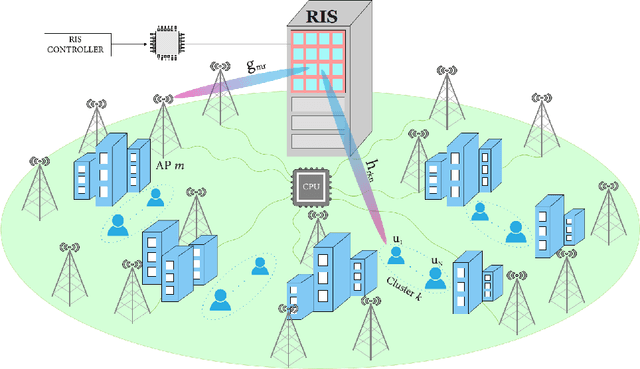


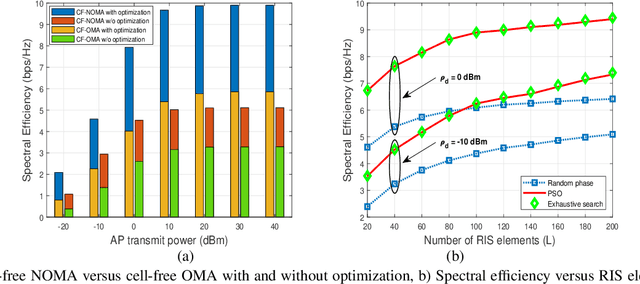
Abstract:We consider a reconfigurable intelligent surface (RIS) assisted cell-free massive multiple-input multiple-output non-orthogonal multiple access (NOMA) system, where each access point (AP) serves all the users with the aid of the RIS. We practically model the system by considering imperfect instantaneous channel state information (CSI) and employing imperfect successive interference cancellation at the users end. We first obtain the channel estimates using linear minimum mean square error approach considering the spatial correlation at the RIS and then derive a closed-form downlink spectral efficiency (SE) expression using the statistical CSI. We next formulate a joint optimization problem to maximize the sum SE of the system. We first introduce a novel successive Quadratic Transform (successive-QT) algorithm to optimize the transmit power coefficients using the concept of block optimization along with quadratic transform and then use the particle swarm optimization technique to design the RIS phase shifts. Note that most of the existing works on RIS-aided cell-free systems are specific instances of the general scenario studied in this work. We numerically show that i) the RIS-assisted link is more advantageous at lower transmit power regions where the direct link between AP and user is weak, ii) NOMA outperforms orthogonal multiple access schemes in terms of SE, and iii) the proposed joint optimization framework significantly improves the sum SE of the system.
URLLC-Aware Proactive UAV Placement in Internet of Vehicles
Jan 30, 2024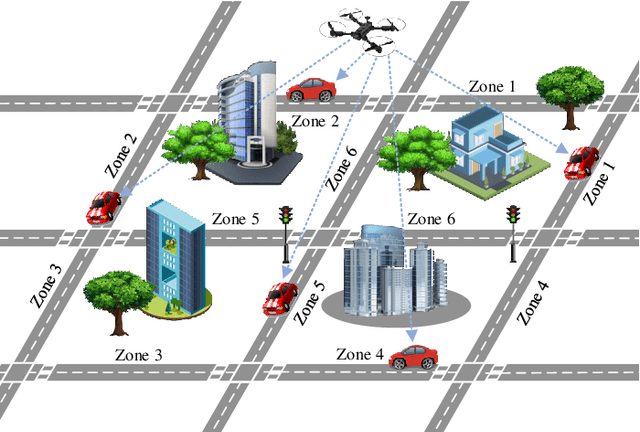

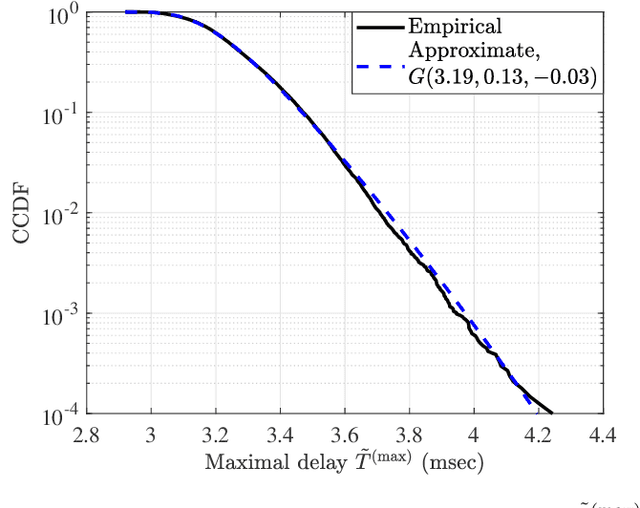
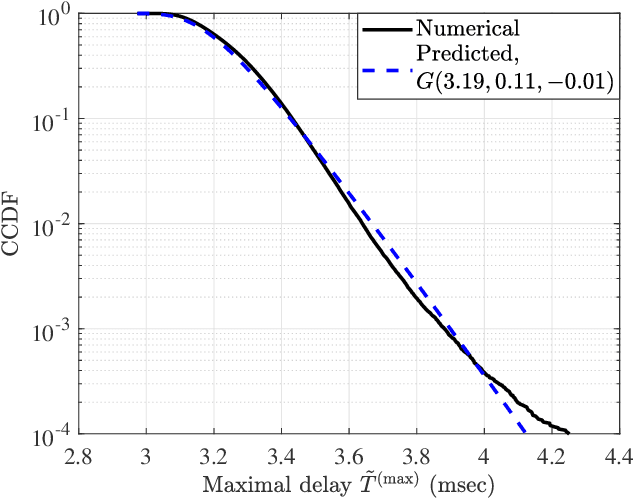
Abstract:Unmanned aerial vehicles (UAVs) are envisioned to provide diverse services from the air. The service quality may rely on the wireless performance which is affected by the UAV's position. In this paper, we focus on the UAV placement problem in the Internet of Vehicles, where the UAV is deployed to monitor the road traffic and sends the monitored videos to vehicles. The studied problem is formulated as video resolution maximization by optimizing over the UAV's position. Moreover, we take into account the maximal transmission delay and impose a probabilistic constraint. To solve the formulated problem, we first leverage the techniques in extreme value theory (EVT) and Gaussian process regression (GPR) to characterize the influence of the UAV's position on the delay performance. Based on this characterization, we subsequently propose a proactive resolution selection and UAV placement approach, which adaptively places the UAV according to the geographic distribution of vehicles. Numerical results justify the joint usage of EVT and GPR for maximal delay characterization. Through investigating the maximal transmission delay, the proposed approach nearly achieves the optimal performance when vehicles are evenly distributed, and reduces 10% and 19% of the 999-th 1000-quantile over two baselines when vehicles are biased distributed.
Continuous Fluid Antenna Systems: Modeling and Analysis
Nov 02, 2023



Abstract:Fluid antennas (FAs) is a promising technology for introducing flexibility and reconfigurability in wireless networks. Recent research efforts have highlighted the potential gains that can be achieved in comparison to conventional antennas. These works assume that the FA has a discrete number of positions that the liquid can take. However, from a practical standpoint, the liquid moves in a continuous fashion to any point inside the FA. In this paper, we focus on a continuous FA system (CFAS) and present a general framework for its design and analytical evaluation. In particular, we derive closed-form analytical expressions for the level crossing rate (LCR) and the average fade duration of the continuous signal-to-interference ratio (SIR) process over the FA's length. Then, by leveraging the LCR expression, we characterize the system's outage performance with a bound on the cumulative distribution function of the SIR's supremum. Our results confirm that the CFAS outperforms its discrete counterpart and thus provides the performance limits of FA-based systems.
Full-Duplex Wireless for 6G: Progress Brings New Opportunities and Challenges
Apr 24, 2023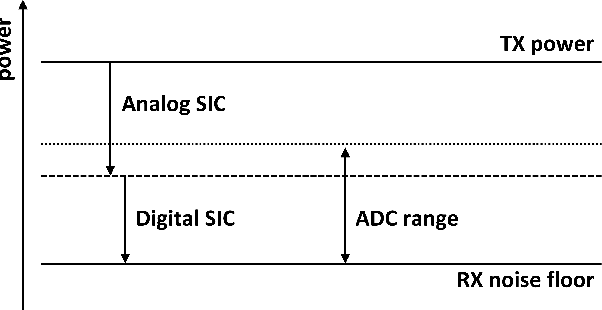
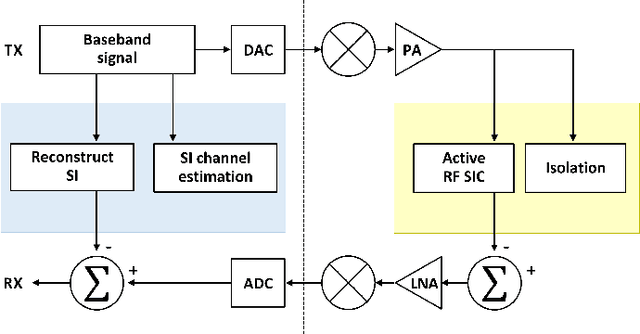

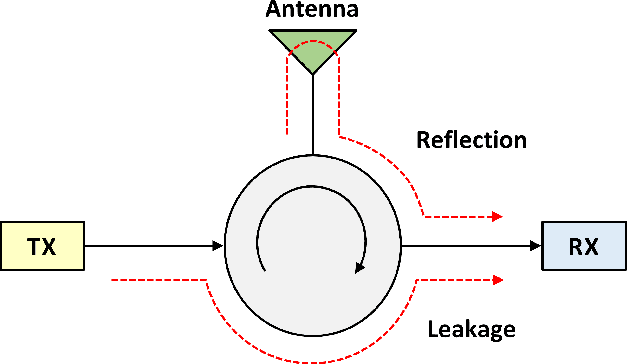
Abstract:The use of in-band full-duplex (FD) enables nodes to simultaneously transmit and receive on the same frequency band, which challenges the traditional assumption in wireless network design. The full-duplex capability enhances spectral efficiency and decreases latency, which are two key drivers pushing the performance expectations of next-generation mobile networks. In less than ten years, in-band FD has advanced from being demonstrated in research labs to being implemented in standards, presenting new opportunities to utilize its foundational concepts. Some of the most significant opportunities include using FD to enable wireless networks to sense the physical environment, integrate sensing and communication applications, develop integrated access and backhaul solutions, and work with smart signal propagation environments powered by reconfigurable intelligent surfaces. However, these new opportunities also come with new challenges for large-scale commercial deployment of FD technology, such as managing self-interference, combating cross-link interference in multi-cell networks, and coexistence of dynamic time division duplex, subband FD and FD networks.
A DRL Approach for RIS-Assisted Full-Duplex UL and DL Transmission: Beamforming, Phase Shift and Power Optimization
Dec 28, 2022



Abstract:In this work, a two-stage deep reinforcement learning (DRL) approach is presented for a full-duplex (FD) transmission scenario that does not depend on the channel state information (CSI) knowledge to predict the phase-shifts of reconfigurable intelligent surface (RIS), beamformers at the base station (BS), and the transmit powers of BS and uplink users in order to maximize the weighted sum rate of uplink and downlink users. As the self-interference (SI) cancellation and beamformer design are coupled problems, the first stage uses a least squares method to partially cancel self-interference (SI) and initiate learning, while the second stage uses DRL to make predictions and achieve performance close to methods with perfect CSI knowledge. Further, to reduce the signaling from BS to the RISs, a DRL framework is proposed that predicts quantized RIS phase-shifts and beamformers using $32$ times fewer bits than the continuous version. The quantized methods have reduced action space and therefore faster convergence; with sufficient training, the UL and DL rates for the quantized phase method are $8.14\%$ and $2.45\%$ better than the continuous phase method respectively. The RIS elements can be grouped to have similar phase-shifts to further reduce signaling, at the cost of reduced performance.
Full-Duplex Transceivers for Next-Generation Wireless Communication Systems
Oct 14, 2022



Abstract:Wireless communication systems can be enhanced at the link level, in medium access, and at the network level when transceivers are equipped with full-duplex capability: the transformative ability to simultaneously transmit and receive over the same frequency spectrum. Effective methods to cancel self-interference are required to facilitate full-duplex operation, which we overview herein in the context of traditional radios, along with those in next-generation wireless networks. We highlight advances in self-interference cancellation that leverage machine learning, and we summarize key considerations and recent progress in full-duplex millimeter-wave systems and their application in integrated access and backhaul. We present example design problems and noteworthy findings from recent experimental research to introduce and motivate the advancement of full-duplex millimeter-wave systems. We conclude this chapter by forecasting the future of full-duplex and outlining important research directions that warrant further study.
Sum Rate Maximization in STAR-RIS Assisted Full-Duplex Communication Systems
Mar 09, 2022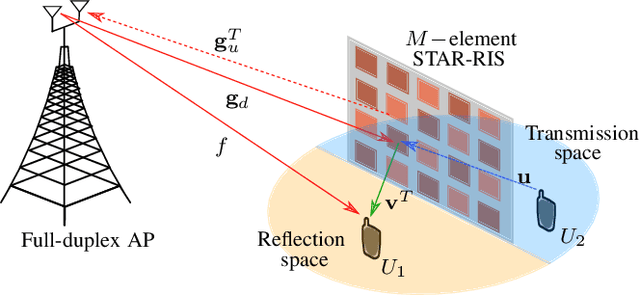


Abstract:The sum-rate performance of simultaneous transmitting and reflecting reconfigurable intelligent surface (STAR-RIS) assisted full-duplex (FD) communication systems is investigated. The reflection and transmission coefficients of STAR-RIS elements are optimized for the energy splitting and mode switching protocols to maximize the weighted sum rate of the system. The underlying optimization problems are non-convex, and hence, the successive convex approximation technique has been employed to develop efficient algorithms to obtain sub-optimal solutions. Thereby, the maximum average weighted sum rate and corresponding coefficients at the STAR-RIS subject to predefined threshold rates and unit-modulus constraints are quantified. The performance of the proposed system design is compared with the conventional reflecting/transmitting-only RISs and half-duplex counterparts via simulations where it is observed that STAR-RIS can boost the performance of FD systems.
 Add to Chrome
Add to Chrome Add to Firefox
Add to Firefox Add to Edge
Add to Edge